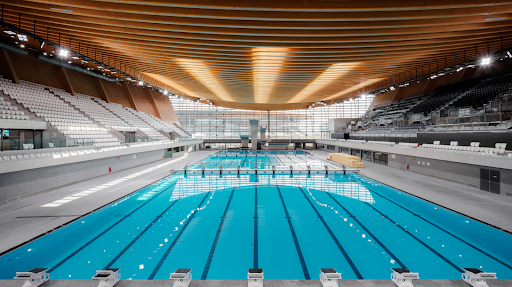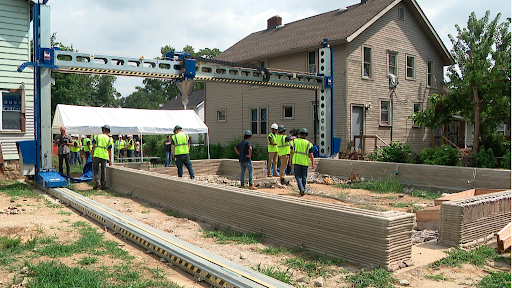This past August, my family and I were watching the Olympics. Katie Ledecky was swimming her legendary 1500 race, and I noticed something at the bottom of the pool. Along with the cameras providing quality underwater shots, screens were installed at the bottom of the pool in each lane, showing the athletes how many laps they had left during the long-distance events. Being able to see the screens and different timing elements such as touch pads visibly used in swimming got me thinking about the extensive mechanization taking place behind the scenes at the Olympics.
One of the latest advancements made to swimming is the suits used for racing. Swimsuits worn at the Summer Olympics of 2024 were equipped with similar technology used to protect satellites in space. Fastskin LZR swimsuits, manufactured by Speedo and Lamoral, are coated in a hydrophobic coating that allows swimmers to glide more easily through the water during races. The coating helps to reduce drag in the water and improve hydrodynamics. It also has the lowest water absorption rate of any swimsuit yet, with a durable water repellency six times more effective than any other suit. When worn, it can shave down up to a second off of an athlete’s time every 50 meters in a race. Similarly, this Lamoral coating technology is used on satellites to reduce deterioration of the spacecraft from long-term exposure to harsh sun radiation and extreme cold in space.
In addition to the technology used in the pool, major advancements are also being made for track and field athletes. A revolutionary development called CompPair’s HealTech is capable of heal

able composites for pole vaults. These composites rely on what CompPair calls HealTech technology to create a healable surface. When a pole gets scratched or dented, heating the resin that holds fibers together can soften them and let them slowly seep back into shape. Incredible amounts of force are exerted on the pole when a person is launching into the air, and the poles can undergo excessive strain when in use. When these poles break, there is a high risk of injury. A self-healing pole would not only be a groundbreaking advancement for technology in field events but also reduce the risk of injury for athletes.
Even before the Olympic Games officially started, major technological feats were utilized to create a smooth viewing experience for watchers worldwide. In the Opening Ceremony, athletes from every country paraded down the Seine River in boats. To provide immersive video to spectators, cameras were placed on each vessel and transmitted footage through a private 5G cellular network. Teams of people also had to make sure that there was a sufficient number of operators to enable the massive amounts of spectator devices in Paris to have adequate coverage.
Ensuring the safety of athletes, officials, and spectators is a vital aspect of hosting any large event. The integration of cutting-edge technology was of the utmost importance. IoT-enabled surveillance cameras strategically located at all Olympic venues will provide real-time, high-definition intelligent video streams, coupled with AI-driven video data analysis algorithms and machine learning prowess. These systems will quickly detect and flag suspicious behaviors, unauthorized access attempts, or potential security threats, enhancing surveillance and proactive action.
There are infinite technologies used behind the scenes to make the Olympics happen and with the addition of artificial intelligence, a new door of technology could be opened for future Olympics. Only time will tell the limit of physical and technological developments to enter future Olympic games.
By Elisabeth Kheir ‘26, Contributing Writer



















